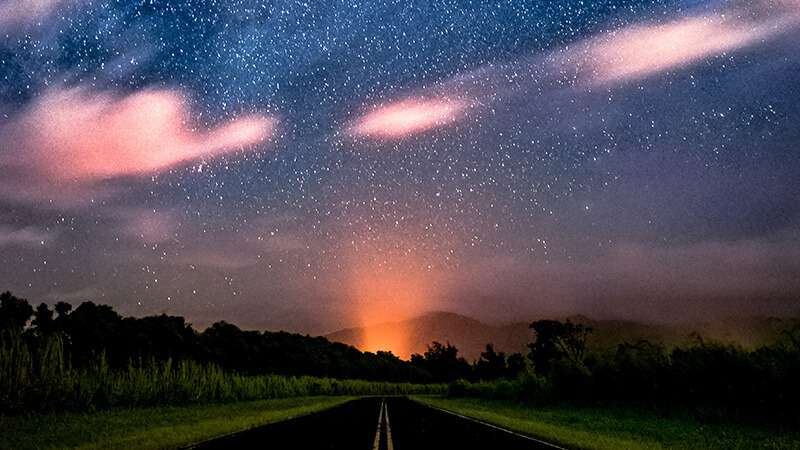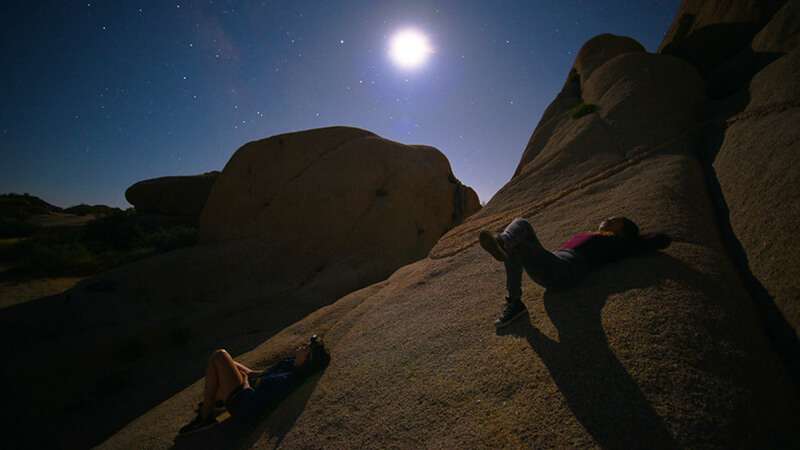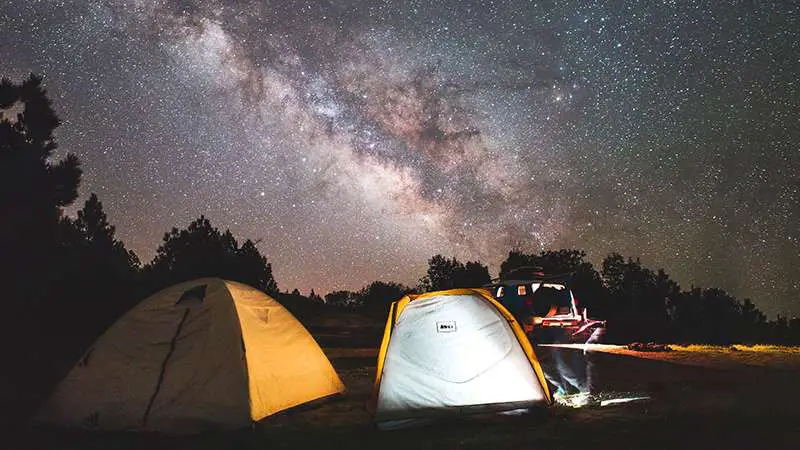Do you ever wonder what lies beyond the night sky? From stars and galaxies to mysterious dark matter, there’s much more up there than meets the eye.
But how much of the night sky do we see?
In this article, I’ll dive into the wonders of astronomy and explore just how much of the night sky is visible to us.
In this article, you get
Estimates of how many stars are visible from Earth
Information about how much of the night sky you can see
What stars are visible from different locations
Five factors that limit how many stars we can see
By the end of this article, you’ll know how much of the night sky we can see and more!
Let’s dive right in.
Recommended For You
How much of the night sky do we see?
Welcome to our exploration of the night sky!
Have you ever taken a moment to appreciate the beauty of the stars in the night sky?
Even if you don’t have access to a telescope, there are still plenty of things to observe in the night sky.
There is something special about looking up into the dark sky and seeing the universe’s wonders before you.
WHAT IS THE NIGHT SKY?

The night sky is beautiful and awe-inspiring.
It offers us glimpses of stars and galaxies far out in space. It’s a reminder of just how small we are in comparison to the vastness of the universe.
At the same time, it gives us a sense of connection to something much larger than ourselves.
On cloudless nights, you can potentially see nearly 10,000 stars with your naked eye. The exact number depends significantly on your geographic location, the light pollution from nearby cities, and other factors.
Of course, you can see more detail with a telescope or binoculars.
Depending on the time of year and the phase of the Moon, you may also get to see other celestial bodies like Mars, Saturn, or Venus.
FREE STARGAZING CHECKLIST
My 5-page Stargazing Checklist will enhance your astronomical observations.
Follow this free checklist to navigate the night sky with confidence, clarity, and a sense of preparedness for a rewarding stargazing experience.

HOW MUCH OF THE NIGHT SKY IS VISIBLE?
The answer depends on five key factors:
- light pollution
- weather conditions
- moon phase
- geographic location
- the brightness of visible stars
Generally speaking, if you’re in a dark area with low light pollution and clear skies, you should be able to see up to 6,000 stars (though this number may vary slightly). If you’re in an area with higher levels of light pollution, you may only be able to see a fraction of the stars visible from darker places.
Additionally, weather conditions, such as low-lying clouds or rainfall, can limit the number of stars one can see in the night sky.
The moon phase is also vital as it can be very bright and wash out some stars in the night sky.
Let’s explore each of these factors in more detail.
1. LIGHT POLLUTION

Light pollution is one of the main factors that affect how much of the night sky we can see.
It is caused by excessive artificial lighting that makes the sky glow, making it difficult to see stars in the night sky.
About 80% of the world’s population lives under skyglow. This has led to a dramatic reduction in the number of stars in our night sky.
Not only does this impact stargazing, but it also has actual and adverse effects on the well-being of many living creatures.
Using energy-efficient lighting and keeping lights off when unnecessary is essential to help reduce light pollution.
2. WEATHER CONDITIONS

Weather conditions can significantly impact the amount of night sky you can see.
For example, when clouds are present, they can block your view of stars and galaxies. On the other hand, clear skies are ideal for stargazing, as they allow you to see more stars.
High humidity or fog can also reduce visibility due to the water vapor in the air.
3. MOON PHASE

The Moon’s phase determines how much of the night sky is visible.
When the Moon is full, it illuminates a large portion of the night sky, making it difficult to view stars and other celestial objects. However, when the Moon rises or sets at night, it makes more of the night sky visible.
The Moon’s position in the sky and weather conditions can also affect its visibility. Sometimes, our Moon reflects so much light that it makes viewing parts of the night sky challenging.
Knowing how to plan around the Moon’s phases can help you maximize your stargazing time under the stars!
4. GEOGRAPHIC LOCATION

The number of stars you can see will vary greatly depending on location.
Elevation can have an impact on the number of stars you see. You can see more stars at higher elevations than at lower elevations. So if you want to get the most out of your stargazing experience, then you should find a spot that is higher up.
Additionally, if you are near large bodies of water, such as an ocean or lake, it may be harder to see stars because of the light reflecting off the water.
5. THE BRIGHTNESS OF VISIBLE STARS

Generally speaking, the Yale Bright Star Catalog lists nearly 10,000 stars brighter than magnitude 6.5. The naked eye limit for most people is 6.5.
In reality, from a clear, moonless night in a dark area far away from city lights, you may see as many as 2,000 stars. That’s a tiny percentage of the nearly 10,000 stars visible across the entire sky in both hemispheres.
Summary
Thank you for reading my article, “How much of the night sky do we see.”
Although there are nearly 10,000 stars we could potentially see, several factors limit this to only about 2,000 stars. These factors are light pollution, weather conditions, moon phase, geographic location, and the brightness of visible stars.
Read additional articles in my Night Sky series:



